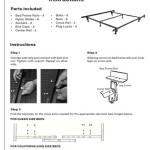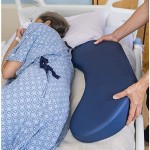When Should Baby Be Moved To Toddler Bed?
The transition from crib to toddler bed is a significant milestone in a child's development. It marks a step towards independence and signals a shift in sleep patterns. While there is no one-size-fits-all answer to when a child is ready for a toddler bed, several factors can guide parents in making this decision. Understanding these factors and considering your child's individual needs can help create a smooth and successful transition.
Age and Developmental Milestones
While there is no specific age at which a child must move to a toddler bed, most children are ready between 18 months and three years old. At this age, they have developed the physical and cognitive skills necessary for independent sleep. This includes the ability to climb in and out of bed without assistance, understand the concept of bedtime, and settle themselves down for sleep.
However, it is crucial to remember that every child develops at their own pace. Some children might be ready earlier, while others might need more time. Observe your child's behavior and look for signs of readiness, such as showing interest in your bed or expressing a desire for more space. If a child is demonstrating a strong aversion to the crib and is consistently climbing out or showing clear distress, transitioning to a toddler bed might be beneficial.
Physical Readiness
Besides age, physical readiness is essential for a successful transition. A toddler should be able to climb in and out of the toddler bed independently without assistance. They should also be able to sit up and stand without losing their balance, reducing the risk of falls. If your child is still quite unsteady on their feet, it might be best to wait a little longer before making the switch.
Additionally, consider the height of the toddler bed. A bed that is too high might intimidate a child or make them feel insecure. A bed with guardrails can offer a sense of security and minimize the risk of falls, especially during the initial stages of the transition.
Behavioral Readiness
Beyond physical capabilities, behavioral readiness plays a crucial role in a smooth transition. Observe your child for signs of independence and self-reliance. They might be showing more interest in self-soothing practices like using a comfort object or showing less dependence on your presence for falling asleep. If your child is expressing a desire for greater autonomy, it might be a good indication that they are ready for a big kid bed.
However, it is essential to note that some children might resist the transition due to anxiety about being separated from their parents or fear of the unknown. If your child seems excessively anxious or scared during the transition, consider delaying the move or adjusting the approach to make it more gradual and comfortable.
Making the Transition
Once you have decided that your child is ready, there are several techniques you can use to make the transition as smooth as possible.
First, introduce the toddler bed gradually. Let your child explore the new bed and get comfortable with it before actually sleeping in it. You can arrange it in a familiar location or let them play and nap in it. Encourage their ownership of the bed by letting them help with decorating it with their favorite toys or bedding.
Second, maintain a consistent bedtime routine. This provides structure and predictability, offering comfort and security during the transition. Keep the bedtime routine similar to the one you used for the crib, including reading a story, singing a song, or giving cuddles, before leaving your child in the toddler bed.
Third, be patient and supportive. Expect some resistance and setbacks. It takes time for children to adjust to a new sleep environment. Offer reassurance, stay calm, and celebrate small wins along the way. Avoid punishment or scolding, which can perpetuate fear and anxiety.
Finally, be prepared to handle regressions. It is common for children to experience some nighttime anxiety or wake up more frequently during the initial period. Comfort them, remain consistent with the bedtime routine, and remind them of the positive aspects of having a big kid bed.
Moving a child to a toddler bed is a significant step in their development. By understanding the factors involved and approaching the transition with patience and sensitivity, parents can create a positive and enjoyable experience for their child. Remember, every child is unique, and there is no right or wrong time to make the switch. Trust your instincts and observe your child's cues to determine when the time is right for them.

How To Move Your Child From Crib Toddler Bed Safely

Ultimate Guide To The Toddler Bed Transition Taking Cara Babies

5 Signs Your Toddler Is Ready To Move A Bed Cafemom Com

When Is It Time To Switch Toddler Bed

Moving Your Child To A Cot Bed Tony Kealys

When To Transition Toddler Bed And How Cleveland Clinic

When To Transition Toddler Bed The Perfect Time And How Do It

10 Best Tips For Transitioning From Crib To Bed Busy Toddler

Transitioning From Crib To Toddler Bed

What To Expect When Moving From A Crib Toddler Bed Modern Tots Blog
Related Posts







